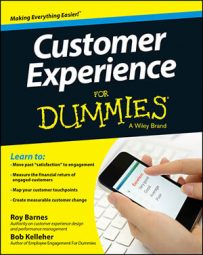In many organizations, employees must interface with customers via phone. Often, however, customers are left feeling frustrated by these exchanges (or lack thereof). Following are some tips for easing their irritation.
Answer calls quickly
When answering a call, what is the optimal wait time? The definitive answer is, there is no definitive answer. It’s industry- and customer-dependent. If you’re calling 911, you want zero wait time. If you’re calling for tickets for your favorite rock band, you’re probably willing to wait a little longer (although not much).
Generally speaking, most call centers shoot for a wait time between 20 and 50 seconds, but you need to do the math to see what makes the most financial sense for you. Remember: Every call operator you add to answer phones costs money — as does every call you lose. It’s a balancing act.
If you have a more sophisticated call center or an automatic call distribution (ACD) software package, you want to look at abandonment rates by hold-time interval. For example, look at how many customers drop off (that is, stop waiting for you to pick up) after 10, 20, 30, 60, 90, and 120 seconds. By analyzing this information, you’ll quickly see how long your customers are willing to wait.
As a very first step, you can then attempt to answer each call in the last few seconds before the majority of your customers hang up.
All that being said, it doesn’t make financial sense to staff your call center to answer the phones more quickly than the customer expects. That is totally unnecessary and very costly.
Many call-center systems and some voice-mail systems offer a feature that enables callers to elect to be called back automatically as soon as the next call-center representative is free rather than being put on hold. See whether your system has this capability (or other capabilities that may be more user-friendly)!
Test your own interactive voice response system
Don’t delegate this task — try it yourself. Call into your company’s interactive voice response (IVR) system and perform some common task. Try to pay a bill or get a question answered. See how easy it is — or isn’t — to get these simple things done. While you’re at it, listen to the greeting and the on-hold music and determine whether it gives the right impression.
Return calls
If you can’t always answer the phone right away, make the process of leaving a message unbelievably easy, and be sure to state exactly when the customer can expect to hear back from you. Don’t say, “Please leave a message and we will get back to you as soon as possible.” That’s too blah — not to mention completely unhelpful.
Instead, try something like this: “Thanks for calling the ABC company. We’re sorry we can’t answer your call right now. Please leave your name, number, and a few helpful details, and you’ll hear back from us within four hours.” Customers like specificity, especially when their immediate needs aren’t being met. Tell them what to expect with as much precision as possible — but don’t make any promises you can’t keep.
In a similar vein, set a clear and inviolate standard for when a response must be made to a customer inquiry and publicize it well throughout your organization. Your policy may call for response within ten minutes or on the same business day. (Waiting much longer than a day may lead customers to conclude that you’re not that interested in their business.) The right response time frame depends upon your customer’s expectations.

